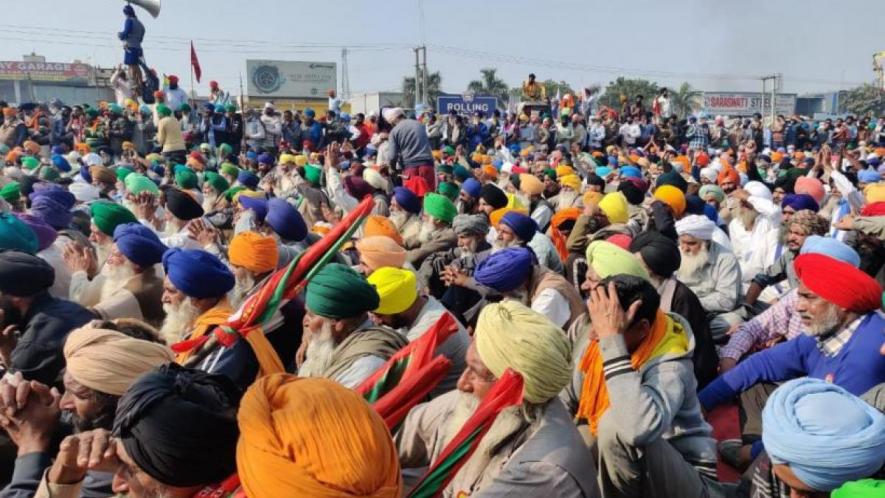Is the Centre's New MSP over 50% Of Farmers' Comprehensive Cost? Nope.

New Delhi: Undeterred by the ongoing farmers’ protest, the Central Government on June 9 announced the minimum support price (MSP) for Kharif crops in 2021 with a marginal hike of close to four per cent — using its old A2+FL (paid out costs + imputed value of family labour) formula.
The Cabinet Committee on Economic Affairs took the call to go ahead with the same-old formula of fixing MSP at a time when peasants from across the country have been blocking routes leading to Delhi for the past eight months, demanding a legislation which would guarantee MSP for all crops, and a complete rollback of three controversial Farm Laws enacted by the Centre last year.
They want the government to announce MSP with C2 (comprehensive cost) as the cost concept on which a profit margin of at least 50% will be added. This formula of calculating MSP is called C2+50.
Here are the prices at which the government will purchase a variety of crops from farmers:
The MSP for paddy has been increased to Rs 1,940 per quintal for the financial year 2021-22 from Rs 1,868 in 2020-21 — a hike of 3.71 per cent. Similarly, the procurement price of other cereals, such as jowar (sorghum), bajra (pearl millet), ragi (finger millet or eleusine coracana) and maize has been risen to Rs 2,758, Rs 2,250, Rs 3,377, Rs 1,870 in 2021-22 against Rs 2,640, Rs 2,150, Rs 3,295 and Rs 1,850 respectively in 2020-21.
With the aim to encourage crop diversification, pulses and oil seeds too have witnessed slightly higher increases in respective MSPs. While both tur (arhar or pigeon pea) and urad (black gram or vigna mungo) saw MSPs rise by Rs 300 – a five per cent increase to Rs 6,300 a quintal for both – the procurement price for moong (green gram or vigna radiata) witnessed a minimal growth of 1.09 per cent to Rs 7,275 against Rs 7,196 per 100 kg.
Sesamum, which saw its MSP rise by 6.6 per cent to Rs 7,307 per quintal, witnessed the highest absolute hike. Groundnut and Nigerseed saw a rise of Rs 275 and Rs 235 respectively per 100 kg.
The government claims that it is procuring crops at least one-and-a-half times higher than the cost of production incurred by farmers. It has also claimed that the rent paid for leased land has been included.
HOW IS MSP CALCULATED?
There are three cost calculations that the Commission for Agricultural Costs and Prices (CACP) uses before arriving at the MSP:
A2 — costs incurred by the farmer in production of a particular crop. It includes several inputs such expenditure on seeds, fertilisers, pesticides, leased-in land, hired labour, machinery and fuel.
A2+FL — costs incurred by the farmer and the value of family labour.
C2 — a comprehensive cost, which includes imputed costs of capital and family labour, interest on the value of owned capital assets, rent paid for leased-in land and rent on the land.
The Swaminathan Committee recommended C2+ 50% of C2 as the ideal formula to calculate MSP. The farmers too have been demanding that the MSP be fixed at 1.5 times of C2 and not 1.5 times of A2+FL.
HAS THE GOVT MET C2+50% CRITERIA?
While the government claims it has included rent of the leased-in land in MSP which has been announced, calculations by Newsclick suggest otherwise.
Take the procurement price of paddy for an instance. The government announced that it has increased the MSP of the cereal by Rs 72, to Rs 1,940 per quintal.
The CACP, a working body under Union Ministry of Agriculture and Farmers’ Welfare, has projected that the cost of production (CoP) of the paddy, according to the C2 formula, would be Rs 1,727 per quintal in marketing season 2021-22.
If multiplied by 1.5, its MSP as per C2+50% should be Rs 2,590.5 per 100 kg. Thus, the MSP declared by the government – Rs 1,940 – is Rs 650.5 per quintal short of the same.
Similarly, the projected CoP of Arhar (Tur) according to the C2 formula stands at Rs 5,291 per quintal for 2021-22; therefore, the MSP should have been Rs 7,936.5 per quintal. However, the government hiked the MSP to Rs 6,300 per quintal. Thus, the MSP was Rs 1,636.5 per quintal less than what it should have been, according to the Swaminathan Commission formula.
Newsclick projected the MSP for all 10 crops using the C2 formula and multiplying it by 1.5. Unsurprisingly, the MSP of not even a single crop turns out to be 1.5 times of the cost of production.
The difference between the MSP declared and the one calculated according to the Swaminathan Commission formula ranges between Rs 611 per quintal to Rs 2,027.5 per quintal, depending upon the crop.

UNHAPPY FARMERS' INDIGNATION
The government, meanwhile, failed to impress the Samyukta Kisan Morcha (SKM) — an umbrella body of over 40 farmers' unions—which is spearheading the protests at Delhi's borders since November 26 last year. Calling the announcement a “jumla” (false promise) of the Narendra Modi government, the SKM said that some hikes, especially for maize, did not even keep pace with inflation.
“There is no mechanism that guarantees that every farmer can find at least the MSP as the floor price in their market interfaces. Therefore, this is a meaningless concept as far as farmers are concerned. And that is why, this movement has been asking for a statutory entitlement for all farmers so that a remunerative MSP can be ensured,” said the protesting unions.
Get the latest reports & analysis with people's perspective on Protests, movements & deep analytical videos, discussions of the current affairs in your Telegram app. Subscribe to NewsClick's Telegram channel & get Real-Time updates on stories, as they get published on our website.
























